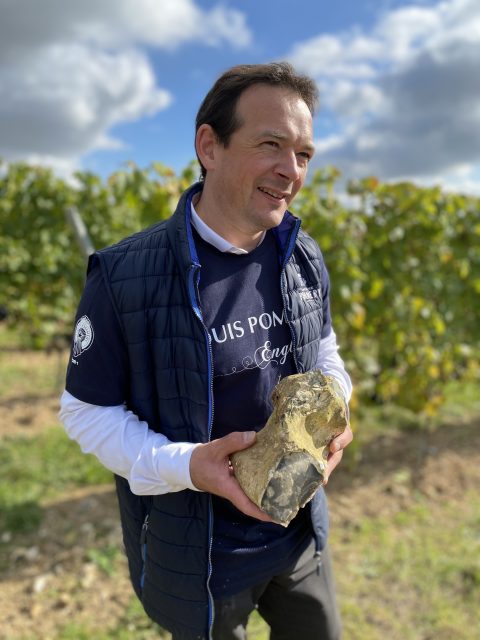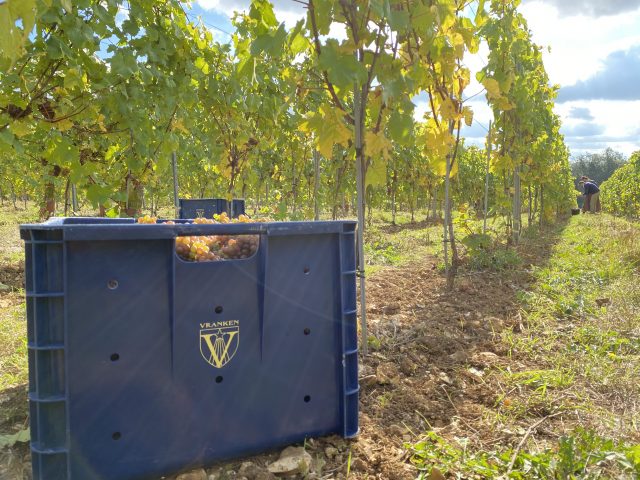This website uses cookies so that we can provide you with the best user experience possible. Cookie information is stored in your browser and performs functions such as recognising you when you return to our website and helping our team to understand which sections of the website you find most interesting and useful.
Champagne Pommery brings in first major harvest from Hampshire
Optimistic – if a bit nervous. That was how Champagne Pommery cellar master Clément Pierlot summed up his feelings as harvest 2021 – which is proving to be a challenging vintage across Britain – kicked off at the Pinglestone Estate in Hampshire. By Peter Richards MW.

“Not everyone in the UK is happy with the vintage this year but for us it’s looking good and healthy,” said Pierlot. Pommery’s UK viticulturist James Bowerman added, “This has been probably the most challenging vintage in the last 10 years – we’ve had to be technical and clever. It’s been about doing the right things at the right time.”
Spring frosts in May in addition to severe disease pressure from downy mildew during the growing season – the result of a rainy, patchy summer – has meant a challenging, late year for many UK growers. A drier, warmer start to autumn has improved the outlook but producers are now looking anxiously to the skies, particularly given rain is forecast and it may prove tricky to fully ripen later varieties like Chardonnay.
“We’re happy with the yield, we’re hitting our targets…so far,” smiles Pierlot. “We’ll see what happens next. We can lose everything if it rains really hard.”
Harvest began at Pinglestone – the 40-hectare (ha) site that currently has 30 ha planted, with 14 ha in production – on 14th October with Pinot Gris and Meunier. This was the first full-scale harvest from this vineyard, with around 120 tonnes predicted, after 20 tonnes were taken in 2020 to make the first Pinglestone Estate Blanc de Blancs.
The plan is to have the first Pinglestone Estate wines, sourced purely from the site that was bought in 2016 and planted from 2017 onwards, ready for release in 2023/2024, to coincide with a new winery on an adjacent site. (Hitherto the wines have been made at Hattingley Valley.) The team also revealed they have bought another vineyard nearby, on a site near Ovington called Lovington Down, where a further 10 ha of mainly Chardonnay will be planted in spring 2022.
“I’m happy with how the project’s going,” said Pierlot as he walked through the vines. “With a new site, you never know if it will be OK. But we had a good feeling here and the wines are looking good. It’s not easy – it’s certainly expensive – but nothing we can’t recover in 10 years.”
The focus of Pommery’s English wines will be Chardonnay, which is reflected in the balance of plantings. This year, the Chardonnay is due to yield around 6-7 tonnes per ha (compared to 9-12 for Pinot Noir). “We only lost 1% to frost this year,” noted Bowerman, “because of our hard work, and using a combination of fans and wood-pellet-burning chauffrettes, which are more efficient and sustainable than paraffin candles.”
Pierlot, meanwhile, described the 2021 Champagne vintage as, “a nightmare”, noting how frost and downy mildew has reduced yields by as much as 60%. “Quality in the juice we have is OK, it may prove a surprise in that sense, but it’s a problem of yield.”
He also identified the sweet spot in terms of pricing for English sparkling wine as around £30. “English sparkling wine should be lower priced than the major Champagne brands to have commercial success,” he said.
Read more
Pommery first Champagne house to release English fizz


